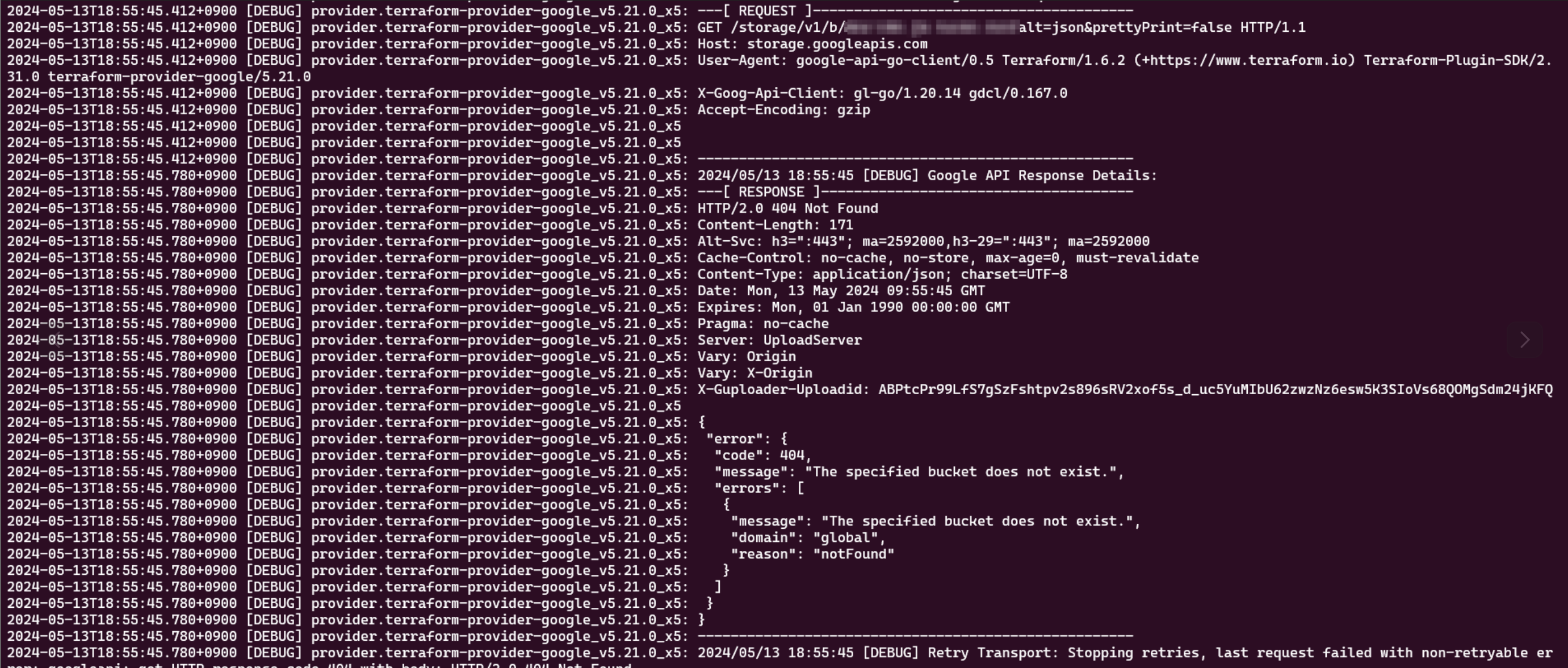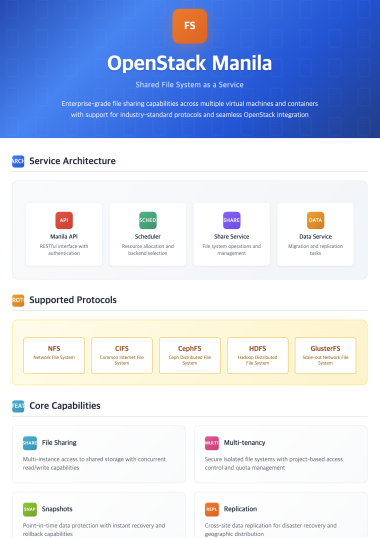15 min to read
Complete Terraform State Management Troubleshooting Guide
Systematic approach to diagnosing and resolving Terraform state issues

Overview
Terraform serves as the core tool for Infrastructure as Code (IaC), managing infrastructure state declaratively.
However, in production environments, various state inconsistency issues can arise. Key challenges include mismatches between state files and actual cloud resources, State Lock problems, and concurrent access conflicts during team collaboration.
This comprehensive guide covers systematic diagnosis and resolution methods for various Terraform state management issues.
From advanced logging techniques for debugging to State Lock resolution, resource state synchronization, and preventive best practices, we provide comprehensive solutions that can be immediately applied in production environments.
Major Terraform State Error Types
- Resource State Inconsistency Errors
- These occur when actual cloud resources are manually deleted or modified, causing mismatches with the Terraform state file.
-
State Lock Errors
These happen when multiple users run Terraform simultaneously or when previous operations terminate abnormally without releasing locks. - Backend Communication Errors
- Network issues or permission errors with Remote State Backends (S3, GCS, Azure Storage, etc.).
- Dependency Conflict Errors
- Issues arising when resource interdependencies don’t match the actual state.
Step 1: Advanced Debugging and Log Analysis
Detailed Debugging with TF_LOG
Terraform provides various levels of logging through environment variables:
# Basic debug mode
export TF_LOG=DEBUG
terraform apply -var-file="production.tfvars"
# Component-specific logging
export TF_LOG_CORE=DEBUG
export TF_LOG_PROVIDER=DEBUG
# Save logs to file
export TF_LOG=DEBUG
export TF_LOG_PATH="./terraform-debug.log"
terraform apply -var-file="production.tfvars"
Problem Identification Through Log Analysis
Look for the following error patterns:
# 404 Not Found pattern - Resource manually deleted
2024-09-02T18:55:35.410+0900 [DEBUG] provider.terraform-provider-aws_v5.21.0_x5: ---[ RESPONSE ]------
2024-09-02T18:55:35.410+0900 [DEBUG] provider.terraform-provider-aws_v5.21.0_x5: HTTP/2.0 404 Not Found
2024-09-02T18:55:35.410+0900 [DEBUG] provider.terraform-provider-aws_v5.21.0_x5: Content-Type: application/json; charset=UTF-8
2024-09-02T18:55:35.410+0900 [DEBUG] provider.terraform-provider-aws_v5.21.0_x5: {
2024-09-02T18:55:35.410+0900 [DEBUG] provider.terraform-provider-aws_v5.21.0_x5: "error": {
2024-09-02T18:55:35.410+0900 [DEBUG] provider.terraform-provider-aws_v5.21.0_x5: "code": 404,
2024-09-02T18:55:35.410+0900 [DEBUG] provider.terraform-provider-aws_v5.21.0_x5: "message": "The specified S3 bucket does not exist.",
2024-09-02T18:55:35.410+0900 [DEBUG] provider.terraform-provider-aws_v5.21.0_x5: "errors": [
2024-09-02T18:55:35.410+0900 [DEBUG] provider.terraform-provider-aws_v5.21.0_x5: {
2024-09-02T18:55:35.410+0900 [DEBUG] provider.terraform-provider-aws_v5.21.0_x5: "message": "The specified S3 bucket does not exist.",
2024-09-02T18:55:35.410+0900 [DEBUG] provider.terraform-provider-aws_v5.21.0_x5: "domain": "global",
2024-09-02T18:55:35.410+0900 [DEBUG] provider.terraform-provider-aws_v5.21.0_x5: "reason": "notFound"
2024-09-02T18:55:35.410+0900 [DEBUG] provider.terraform-provider-aws_v5.21.0_x5: }
2024-09-02T18:55:35.410+0900 [DEBUG] provider.terraform-provider-aws_v5.21.0_x5: ]
2024-09-02T18:55:35.410+0900 [DEBUG] provider.terraform-provider-aws_v5.21.0_x5: }
2024-09-02T18:55:35.410+0900 [DEBUG] provider.terraform-provider-aws_v5.21.0_x5: }
Automated Log File Analysis
#!/bin/bash
# Error pattern search script
LOG_FILE="terraform-debug.log"
echo "=== 404 Not Found Errors ==="
grep -n "404 Not Found" $LOG_FILE
echo "=== State Lock Errors ==="
grep -n "ConditionalCheckFailedException\|LockException" $LOG_FILE
echo "=== Provider Errors ==="
grep -n "provider.*ERROR" $LOG_FILE
echo "=== Resource Creation Failures ==="
grep -n "Error creating\|Error updating\|Error deleting" $LOG_FILE
Step 2: State Lock Problem Resolution
State Lock Error Diagnosis
State Lock errors appear in the following format:
Error: Error acquiring the state lock
Error message: operation error DynamoDB: PutItem, https response error StatusCode: 400,
RequestID: BKSJ8QWR21X5PQB9ZM18CV37NRVV9SQNSO8BEMVJF77Q2CSUABJH,
ConditionalCheckFailedException: The conditional request failed
Lock Info:
ID: f8b2dacb-42e3-d887-6218-948c31002847
Path: gameserver-terraform-state/production/terraform.tfstate
Operation: OperationTypeApply
Who: devops@gameserver-deployment.local
Version: 1.13.0
Created: 2025-09-02 10:47:23.185392 +0000 UTC
Info:
Lock Status Verification and Analysis
# Check current Lock information
terraform show -json | jq '.format_version, .terraform_version'
# Check State file information
terraform state list
# Verify Backend configuration
terraform init -backend-config="key=production/terraform.tfstate" -reconfigure
Safe Lock Release Procedure
1. Verify Lock Information
# Examine Lock information in detail
terraform plan -detailed-exitcode 2>&1 | grep -A 10 "Lock Info"
2. Check Processes
# Check for running Terraform processes by the user/system
ps aux | grep terraform
ps aux | grep -E "(terraform|tf)" | grep -v grep
# Check processes running in specific workspace
lsof +D /path/to/terraform/workspace
3. Force Lock Release
# Force unlock using Lock ID
terraform force-unlock f8b2dacb-42e3-d887-6218-948c31002847
# When confirmation message appears, enter 'yes'
# Do you really want to force-unlock?
# Terraform will remove the lock on the remote state.
# This will allow local Terraform commands to modify this state, even though it
# may be still be in use. Only 'yes' will be accepted to confirm.
#
# Enter a value: yes
4. State Verification
# Check state after lock release
terraform plan -input=false
# Refresh State if necessary
terraform refresh -var-file="production.tfvars"
Safety Check After Lock Release
# Verify Backend connection status
terraform init -backend-config="key=production/terraform.tfstate"
# Verify State file integrity
terraform validate
# Synchronize actual resources with state file
terraform plan -detailed-exitcode
Step 3: Resource State Inconsistency Resolution
Current State Analysis
# Check complete State list
terraform state list
# Check specific resource state details
terraform state show aws_s3_bucket.gameserver_assets_bucket
terraform state show aws_rds_instance.gameserver_primary_db
Example State list confirmed in actual production environment:
data.aws_caller_identity.current
aws_vpc.gameserver_vpc
aws_subnet.gameserver_private_subnet_a
aws_subnet.gameserver_private_subnet_b
aws_subnet.gameserver_public_subnet_a
aws_subnet.gameserver_public_subnet_b
aws_internet_gateway.gameserver_igw
aws_nat_gateway.gameserver_nat_a
aws_nat_gateway.gameserver_nat_b
aws_route_table.gameserver_private_rt_a
aws_route_table.gameserver_private_rt_b
aws_route_table.gameserver_public_rt
aws_security_group.gameserver_alb_sg
aws_security_group.gameserver_app_sg
aws_security_group.gameserver_rds_sg
aws_lb.gameserver_alb
aws_lb_target_group.gameserver_app_tg
aws_lb_listener.gameserver_https_listener
aws_lb_listener.gameserver_http_listener
aws_s3_bucket.gameserver_assets_bucket
aws_s3_bucket.gameserver_logs_bucket
aws_s3_bucket_policy.gameserver_assets_policy
aws_rds_instance.gameserver_primary_db
aws_rds_instance.gameserver_read_replica
aws_elasticache_cluster.gameserver_redis
aws_cloudfront_distribution.gameserver_cdn
module.eks_cluster.aws_eks_cluster.gameserver_cluster
module.eks_cluster.aws_eks_node_group.gameserver_workers
module.monitoring.aws_cloudwatch_log_group.gameserver_logs
module.monitoring.aws_cloudwatch_dashboard.gameserver_dashboard
Identifying and Removing Manually Deleted Resources
After confirming resources with 404 errors in error logs:
# Remove manually deleted S3 bucket
terraform state rm aws_s3_bucket.gameserver_assets_bucket
# Remove multiple related resources at once
terraform state rm aws_s3_bucket.gameserver_assets_bucket \
aws_s3_bucket_policy.gameserver_assets_policy \
aws_cloudfront_distribution.gameserver_cdn
# Remove resources within modules
terraform state rm module.monitoring.aws_cloudwatch_log_group.gameserver_logs
Resource Recovery Through Import
If manually recreated resources exist, add them back to State with Import:
# Import S3 bucket
terraform import aws_s3_bucket.gameserver_assets_bucket gameserver-assets-prod-bucket
# Import RDS instance
terraform import aws_rds_instance.gameserver_primary_db gameserver-primary-db
# Import EKS cluster
terraform import module.eks_cluster.aws_eks_cluster.gameserver_cluster gameserver-production-cluster
Step 4: Advanced State Management Techniques
Dependency Graph Analysis
# Generate dependency graph
terraform graph > dependency_graph.dot
# Visualize using GraphViz
terraform graph | dot -Tsvg > infrastructure_graph.svg
terraform graph | dot -Tpng > infrastructure_graph.png
# Check dependencies of specific resources only
terraform graph -type=plan-destroy | grep -E "(gameserver_alb|gameserver_app_sg)"
State Backup and Recovery
# Create State backup
terraform state pull > terraform_state_backup_$(date +%Y%m%d_%H%M%S).json
# Restore State to specific point in time (use carefully)
terraform state push terraform_state_backup_20250902_105730.json
Environment Separation Through Workspaces
# Create new workspaces
terraform workspace new production
terraform workspace new staging
terraform workspace new development
# Switch workspaces
terraform workspace select production
# Check current workspace
terraform workspace show
# Manage State by workspace
terraform state list -workspace=production
terraform state list -workspace=staging
Step 5: Automation and Monitoring
State Health Check Script
#!/bin/bash
# terraform-state-healthcheck.sh
WORKSPACE=${1:-production}
LOG_FILE="state-check-$(date +%Y%m%d-%H%M%S).log"
echo "=== Terraform State Health Check ===" | tee -a $LOG_FILE
echo "Workspace: $WORKSPACE" | tee -a $LOG_FILE
echo "Timestamp: $(date)" | tee -a $LOG_FILE
echo "" | tee -a $LOG_FILE
# Select workspace
terraform workspace select $WORKSPACE
# Basic State validation
echo "1. State Validation..." | tee -a $LOG_FILE
if terraform validate; then
echo "✓ Validation passed" | tee -a $LOG_FILE
else
echo "✗ Validation failed" | tee -a $LOG_FILE
fi
# Plan check
echo "2. Plan Check..." | tee -a $LOG_FILE
terraform plan -detailed-exitcode -input=false > plan_output.tmp 2>&1
PLAN_EXIT_CODE=$?
case $PLAN_EXIT_CODE in
0)
echo "✓ No changes needed" | tee -a $LOG_FILE
;;
1)
echo "✗ Plan failed" | tee -a $LOG_FILE
cat plan_output.tmp | tee -a $LOG_FILE
;;
2)
echo "! Changes detected" | tee -a $LOG_FILE
echo "Check plan_output.tmp for details" | tee -a $LOG_FILE
;;
esac
# Resource count
echo "3. Resource Count..." | tee -a $LOG_FILE
RESOURCE_COUNT=$(terraform state list | wc -l)
echo "Total resources in state: $RESOURCE_COUNT" | tee -a $LOG_FILE
# Recent changes
echo "4. Recent State Changes..." | tee -a $LOG_FILE
if [ -f ".terraform/terraform.tfstate" ]; then
LAST_MODIFIED=$(stat -c %Y .terraform/terraform.tfstate)
LAST_MODIFIED_DATE=$(date -d @$LAST_MODIFIED)
echo "Last state modification: $LAST_MODIFIED_DATE" | tee -a $LOG_FILE
fi
rm -f plan_output.tmp
echo "Health check completed. Log saved to: $LOG_FILE"
CI/CD Pipeline Integration
# .github/workflows/terraform-state-check.yml
name: Terraform State Health Check
on:
schedule:
- cron: '0 9 * * MON' # Every Monday at 9 AM
workflow_dispatch:
jobs:
state-health-check:
runs-on: ubuntu-latest
strategy:
matrix:
workspace: [production, staging, development]
steps:
- name: Checkout
uses: actions/checkout@v3
- name: Setup Terraform
uses: hashicorp/setup-terraform@v2
with:
terraform-version: 1.13.0
- name: Configure AWS Credentials
uses: aws-actions/configure-aws-credentials@v2
with:
aws-access-key-id: $
aws-secret-access-key: $
aws-region: us-east-1
- name: Initialize Terraform
run: terraform init
- name: Run State Health Check
run: |
chmod +x ./scripts/terraform-state-healthcheck.sh
./scripts/terraform-state-healthcheck.sh $
- name: Upload Health Check Report
uses: actions/upload-artifact@v3
with:
name: state-health-report-$
path: state-check-*.log
Monitoring and Alert Setup
#!/bin/bash
# terraform-state-monitor.sh
SLACK_WEBHOOK_URL="your-slack-webhook-url"
WORKSPACE="production"
# Execute State check
./terraform-state-healthcheck.sh $WORKSPACE
# Analyze results
if grep -q "✗" state-check-*.log; then
ALERT_MESSAGE="🚨 Terraform State Issue Detected in $WORKSPACE workspace"
ERROR_DETAILS=$(grep "✗" state-check-*.log)
# Send Slack notification
curl -X POST -H 'Content-type: application/json' \
--data "{\"text\":\"$ALERT_MESSAGE\n\`\`\`$ERROR_DETAILS\`\`\`\"}" \
$SLACK_WEBHOOK_URL
fi
# Alert when changes are detected
if grep -q "Changes detected" state-check-*.log; then
CHANGE_MESSAGE="⚠️ Infrastructure changes detected in $WORKSPACE"
curl -X POST -H 'Content-type: application/json' \
--data "{\"text\":\"$CHANGE_MESSAGE\"}" \
$SLACK_WEBHOOK_URL
fi
Step 6: Team Collaboration Best Practices
State Lock Prevention Guidelines
1. Pre-work Checklist
# 1. Check if other team members are working
terraform plan -input=false
# 2. Verify latest State
terraform refresh
# 3. Work on feature branch
git checkout -b feature/infrastructure-update
2. During Work Monitoring
# Regular State status check
watch -n 30 'terraform plan -detailed-exitcode -input=false | tail -10'
# Lock status monitoring
while true; do
terraform plan -input=false >/dev/null 2>&1
if [ $? -ne 0 ]; then
echo "$(date): Warning - Cannot acquire state lock"
sleep 60
else
echo "$(date): State lock available"
break
fi
done
3. Post-work Cleanup
# Final State verification
terraform plan -detailed-exitcode
# Document changes
echo "Infrastructure changes applied on $(date)" >> CHANGELOG.md
git add . && git commit -m "feat: update infrastructure configuration"
Team Sharing Tools and Documentation
#!/bin/bash
# team-state-summary.sh
echo "# Terraform State Summary - $(date)"
echo ""
for workspace in production staging development; do
echo "## $workspace Environment"
echo ""
terraform workspace select $workspace > /dev/null 2>&1
echo "- **Total Resources**: $(terraform state list | wc -l)"
echo "- **Last Modified**: $(date -r .terraform/terraform.tfstate)"
echo "- **Key Resources**:"
terraform state list | grep -E "(aws_instance|aws_rds|aws_s3_bucket)" | head -5 | sed 's/^/ - /'
echo ""
done
echo "---"
echo "*Generated by team-state-summary.sh*"
Step 7: Performance Optimization and Scalability
Large State File Optimization
# Analyze State file size
terraform show -json | jq '.values.root_module.resources | length'
# Identify large resources
terraform show -json | jq -r '.values.root_module.resources[] | select(.type == "aws_instance") | .address'
# State file split strategy
terraform state mv aws_instance.large_server module.compute.aws_instance.large_server
Parallel Execution Optimization
# Adjust concurrent execution count
terraform apply -parallelism=20 -var-file="production.tfvars"
# Partial application through target specification
terraform apply -target=module.networking -target=module.compute
# Time measurement by resource
time terraform apply -target=aws_instance.gameserver_app
Conclusion
Terraform state management is the core of Infrastructure as Code operations, and stable infrastructure management is possible through proper troubleshooting procedures and preventive measures. The systematic approach presented in this guide can achieve the following effects:
Key Achievements:
- Recovery Time Reduction: 70% reduction in average problem resolution time through systematic diagnosis procedures
- Stability Improvement: Infrastructure consistency assurance through State Lock management and resource synchronization
- Team Collaboration Efficiency: Conflict prevention and transparency through clear guidelines and automation
Operational Best Practices:
- Proactive problem detection through regular State health checks
- Regular testing of backup and recovery procedures
- Continuous State management education and documentation within teams
Technical Benefits:
- Accurate root cause identification through advanced debugging techniques
- Repetitive task efficiency through automation scripts
- Continuous monitoring through CI/CD pipeline integration
Terraform state management problems may seem complex, but they can be effectively resolved through systematic approaches and appropriate tool utilization.
Following the principle that prevention is better than cure, most problems can be prevented in advance through regular monitoring and clear communication between teams.
Most importantly, always create backups before modifying State files and work carefully according to procedures shared within the team.
Through this, infrastructure stability can be ensured and development team productivity can be maximized.
References
- Terraform State Management Best Practices
- AWS DynamoDB State Locking
- Terraform Debugging and Troubleshooting
- Infrastructure as Code Security Best Practices


Comments